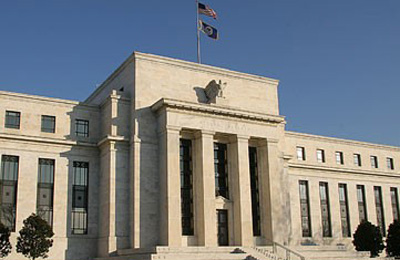
Fed set to signal easing; big steps unlikely
Washington, August 1, 2012
The Federal Reserve is likely to show on Wednesday that it is ready to act against a weakening US economy but stop short of aggressive measures for now.
Economists say the central bank could well push back its guidance for when it sees the need for an eventual rate hike into 2015 from the current Fed consensus of late-2014, a move that could signal the depth of the central bank's concerns about the economy and hint at new measures ahead.
Wall Street is braced for another round of Fed bond purchases, and some see an off chance that an announcement might come on Wednesday. But analysts believe policymakers will wait until at least September, giving them more time to lay out the case for their preferred method for easing policy in speeches between now and then.
"We do not expect any new initiative from the Fed," said Eric Green, economist at TD Securities. "A dovish statement signaling willingness to do more will manage frustrated expectations for more (monetary easing)."
A statement is expected around 2:15 p.m. (1815 GMT). The Fed's policy-setting Federal Open Market Committee resumed the second day of a two-day meeting as expected at 9 a.m., an official said.
Fed officials will hint at further stimulus in part through what most analysts envision as a substantially weaker outlook on the U.S. economy than that delivered in June.
At that time, the Fed predicted the U.S. economy would grow between 1.9 percent and 2.4 percent this year, an estimate that now looks optimistic.
"It seems like a virtual certainty that they'll mark down their expectations for growth," said Michael Cloherty, economist at RBC Capital. "Not doing so would seem almost out of touch."
However, the Fed will not release another set of official forecasts until September, so it will have to allude to such a shift through changes in the language of its closely read post-meeting statement.
US economic growth slowed to 1.5 percent in the second quarter as consumer spending faltered, and unemployment remains stuck at 8.2 percent, far too high for the comfort of a central bank that has a dual mandate to keep inflation low and employment high. Job growth slowed sharply in the second quarter to just 75,000 jobs per month from 226,000 in the first quarter.
A report on Wednesday showing US companies added 163,000 jobs in July, more than expected, could factor into policymakers' thinking. However, that survey, the ADP National Employment Report, does not carry as much weight as the government's more comprehensive labor market report due on Friday, which includes both public and private sector employment.
Economists polled by Reuters before the ADP release were expecting 100,000 new hires in the government's jobs report.
The Fed meets just a day before a key meeting of the European Central Bank. ECB President Mario Draghi recently ratcheted up speculation of further ECB purchases of Italian and Spanish bonds by saying he would do "whatever it takes to preserve the euro."
Global stock markets rallied sharply late last week on hopes that at least one of the two institutions would deliver some sort of fresh stimulus program. But investors have toned down their expectations since then.
Europe's crisis is blamed for part of the U.S. slowdown, as trade between the two giants economies slows and fears of another financial crisis keep businesses and consumers on the defensive.
Against that grim backdrop, many think Fed Chairman Ben Bernanke could use his speech at the central bank's high-profile gathering in Jackson Hole, Wyoming, in August to send a strong message to markets. He used that forum in 2010 to communicate the Fed's intention to pursue a second round of quantitative easing, or QE2. - Reuters







